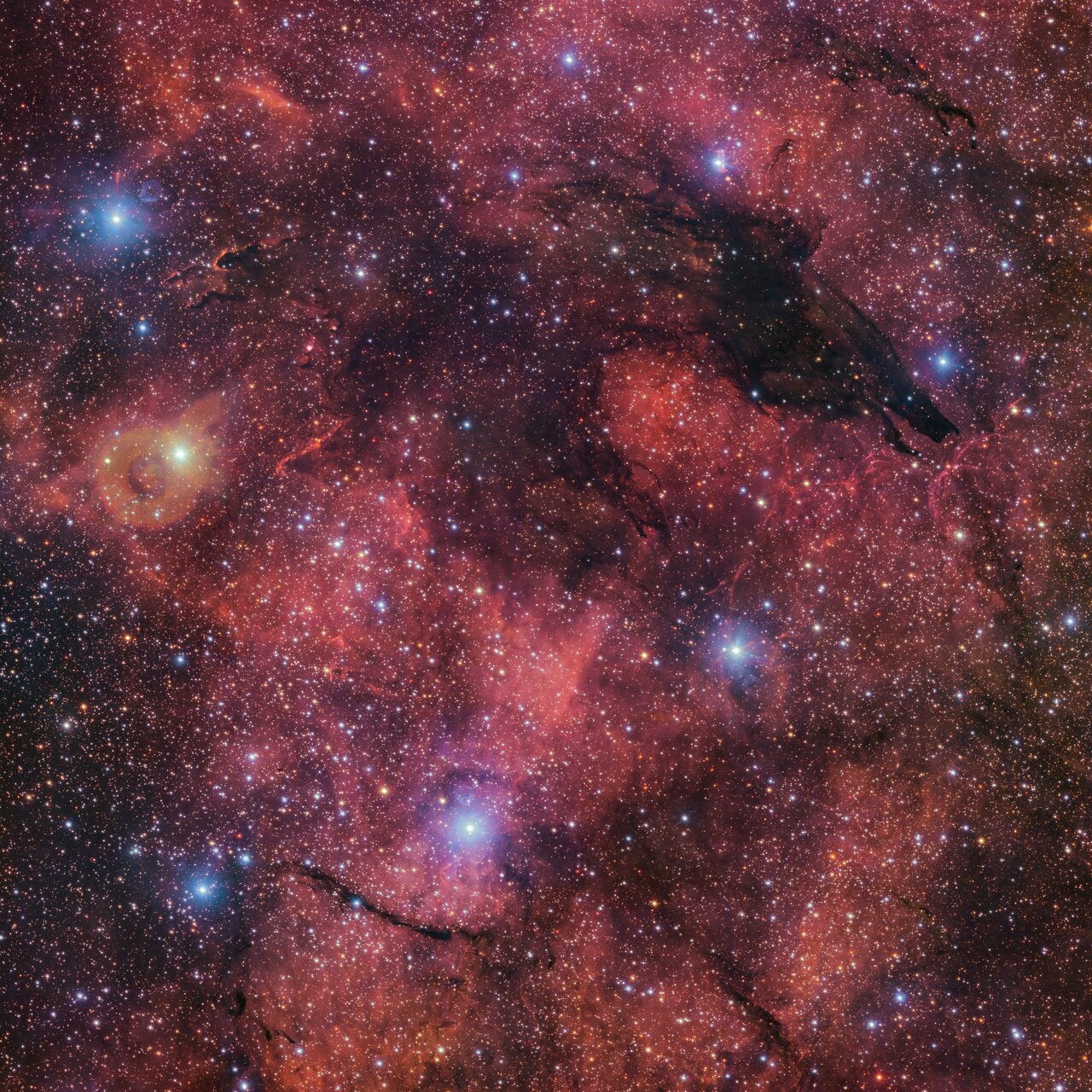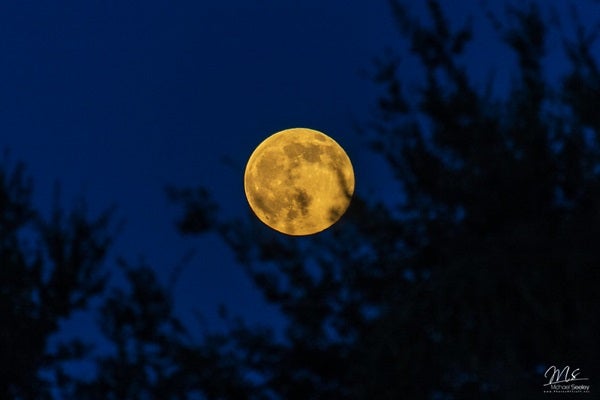
The Starship upper stage and Super Heavy booster stand on the launch pad in April 2023 ahead of the first integrated flight test for SpaceX’s Starship system. Credit: SpaceX
In 2024, space exploration has amazed the world.
NASA’s Europa Clipper has begun its journey to study Jupiter’s moon Europa. SpaceX’s Starship has made its first successful landing, a critical milestone for future deep space missions. China made headlines with the Chang’e 6 mission, which successfully returned samples from the far side of the Moon. Meanwhile, the International Space Station has continued to host international crews, including private missions such as Axiom Mission 3.
As an aerospace engineer, I’m excited for 2025, when space agencies around the world are preparing for even more ambitious goals. Here’s a look at the most exciting missions planned for next year, which will further expand humanity’s horizons, from the Moon and Mars to asteroids and beyond:
Exploration of the lunar surface with CLPS
NASA’s Commercial Lunar Payload Services, or CLPS, initiative aims to deliver science and technology payloads to the Moon using commercial landers. CLPS is what brought Intuitive Machines’ Odysseus lander to the Moon in February 2024, marking the first US Moon landing since Apollo.
In 2025, NASA has several CLPS missions planned, including deliveries from the companies Astrobotic, Intuitive Machines and Firefly Aerospace.
These missions will carry a variety of scientific instruments and technology demonstrations to different lunar locations. The payloads will include experiments to study lunar geology, test new technologies for future human missions, and collect data on the lunar environment.

Observe the sky with SPHEREx
In February 2025, NASA plans to launch the Spectrophotometer for the History of the Universe, Epoch of Reionization, and Ices Explorer Observatory, or SPHEREx. This mission will examine the sky in near-infrared light, which is a type of light that is invisible to the naked eye but that special instruments can detect. Near-infrared light is useful for observing objects that are too cold or too distant to be seen in visible light.
SPHEREx will create a complete map of the universe by detecting and collecting data on more than 450 million galaxies along with more than 100 million stars in the Milky Way. Astronomers will use this data to answer big questions about the origins of galaxies and the distribution of water and organic molecules in stellar nurseries – where stars are born from gas and dust.

Studying low Earth orbit with Space Rider
The European Space Agency, or ESA, plans to conduct an orbital test flight of its Space Rider uncrewed spaceplane in the third quarter of 2025. Space Rider is a reusable spacecraft designed to carry out various scientific experiments in low Earth orbit.
These science experiments will include research into microgravity, which is the nearly weightless environment of space. Scientists will study how plants grow, how materials behave and how biological processes occur without the influence of gravity.
Space Rider will also demonstrate new technologies for future missions. For example, it will test advanced telecommunications systems, which are crucial for maintaining communication with spacecraft over long distances. New robotic exploration tools will also be tested for use in future missions to the Moon or Mars.

Exploring the Moon with M2/Resilience
Japan’s M2/Resilience mission, scheduled for January 2025, will launch a lander and micro-rover to the lunar surface.
This mission will study lunar soil to understand its composition and properties. The researchers will also conduct a water-splitting test to produce oxygen and hydrogen by extracting water from the lunar surface, heating the water, and splitting the captured vapor. The water, oxygen and hydrogen generated can be used to enable long-term lunar exploration.
This mission will also demonstrate new technologies, such as advanced navigation systems for precise landings and systems to operate the rover autonomously. These technologies are essential for future lunar exploration and could be used in missions to Mars and beyond.
The M2/Resilience mission is part of Japan’s broader efforts to contribute to international lunar exploration. It builds on the success of Japan’s Smart Lander for Investigating Moon, or SLIM, mission, which landed on the Moon using a precise landing technique in March 2024.

Investigating an asteroid with Tianwen-2
China’s Tianwen-2 mission is an ambitious asteroid sample return and comet probe mission. Scheduled to launch in May 2025, Tianwen-2 aims to collect samples from a near-Earth asteroid and study a comet. This mission will improve scientists’ understanding of the formation and evolution of the solar system, building on the success of China’s previous lunar and Mars missions.
The mission’s first target is the near-Earth asteroid 469219 Kamoʻoalewa. This asteroid is a quasi-satellite of Earth, meaning it orbits the Sun but stays close to Earth. Kamoʻoalewa is about 131-328 feet (40-100 meters) in diameter and may be a fragment of the Moon, ejected into space by a past impact event.
By studying this asteroid, scientists hope to learn about the early solar system and the processes that shaped it. The spacecraft will use both touch-and-go and anchor-and-stick techniques to collect samples from the asteroid’s surface.
After collecting samples from Kamo’oalewa, Tianwen-2 will return them to Earth and then set course for its second target, the main-belt comet 311P/PANSTARRS. This comet is located in the asteroid belt between Mars and Jupiter.
By analyzing materials from the comet, researchers hope to learn more about the conditions that existed in the early solar system and possibly the origins of water and organic molecules on Earth.
Close flybys of the solar system
In addition to the launch missions planned above, several space agencies plan to perform exciting deep space flyby missions in 2025.
A flyby, or gravity assist, occurs when a spacecraft passes close enough to a planet or moon to use its gravity to increase speed. As the spacecraft approaches, it is pulled by the planet’s gravity, which helps it accelerate.
After swinging around the planet, the spacecraft is launched back into space, allowing it to change direction and continue on its intended path using less fuel.
BepiColombo, a joint mission of ESA and the Japan Aerospace Exploration Agency, JAXA, will perform its sixth flyby of Mercury in January 2025. This maneuver will help the spacecraft enter orbit around Mercury by November 2026. BepiColombo aims to study the composition, atmosphere and planet of Mercury. surface geology.
NASA’s Europa Clipper mission, launching in October 2024, will make significant progress on its journey to Jupiter’s moon Europa. In March 2025, the spacecraft will perform a flyby maneuver on Mars.
This maneuver will help the spacecraft gain the speed and trajectory needed for its long journey. Later in December 2026, Europa Clipper will perform a flyby of Earth, using Earth’s gravity to further increase its momentum so it can arrive at Europa in April 2030.
ESA’s Hera mission will also perform a flyby of Mars in March 2025. Hera is part of the Asteroid Impact and Deflection Assessment mission, which plans to study the binary asteroid system Didymos. The mission will provide valuable data on asteroid deflection techniques and contribute to planetary defense strategies.
NASA’s Lucy mission will continue its journey to explore Jupiter’s Trojan asteroids, which share Jupiter’s orbit around the Sun, in 2025. A key event for Lucy is the expected flyby of the inner main belt asteroid 52246 Donaldjohanson for April 20, 2025.
This flyby will provide valuable data on this ancient asteroid’s composition and surface characteristics, which can help researchers gain detailed insights into the early solar system. The asteroid is named after the paleoanthropologist who discovered the famous “Lucy” fossil.
ESA’s Jupiter Icy Moons Explorer mission, or JUICE, will perform a flyby of Venus in August 2025. This maneuver will help JUICE gain the speed and trajectory needed for its journey to Jupiter. Once it arrives, JUICE will study Jupiter’s icy moons to understand their potential to host life.
2025 promises to be a transformative year for space exploration. With NASA’s ambitious missions and significant contributions from other countries, we are poised to make great strides in humanity’s understanding of the universe. These missions will not only advance scientific knowledge, but also inspire future generations to look towards the stars.
Zhenbo Wang is an associate professor of mechanical, aerospace, and biomedical engineering at the University of Tennessee. Receives funding from NASA.
The University of Tennessee provides funding as a member of The Conversation US.
![]()
This article is republished from The Conversation under a Creative Commons license. Read the original article.

